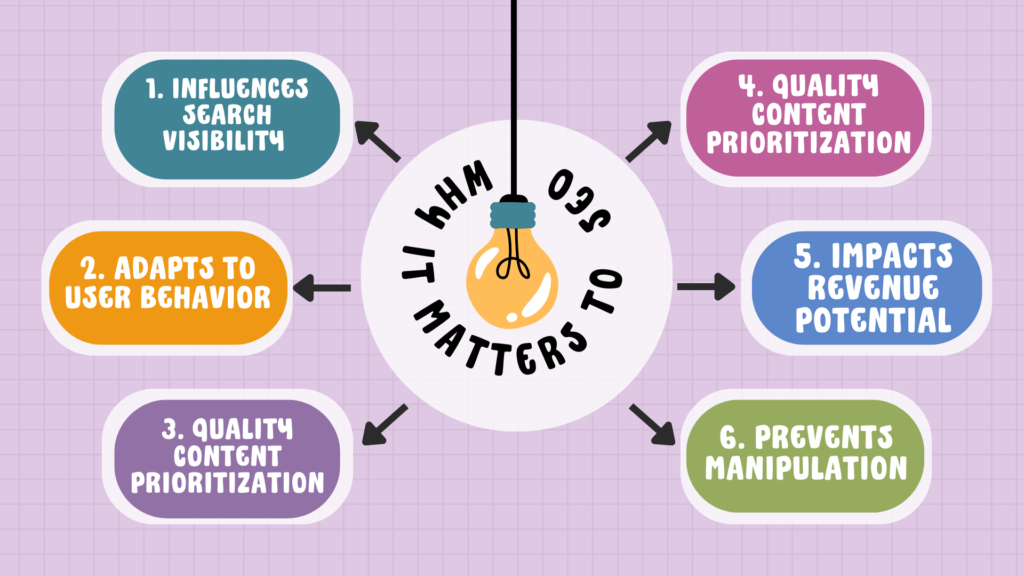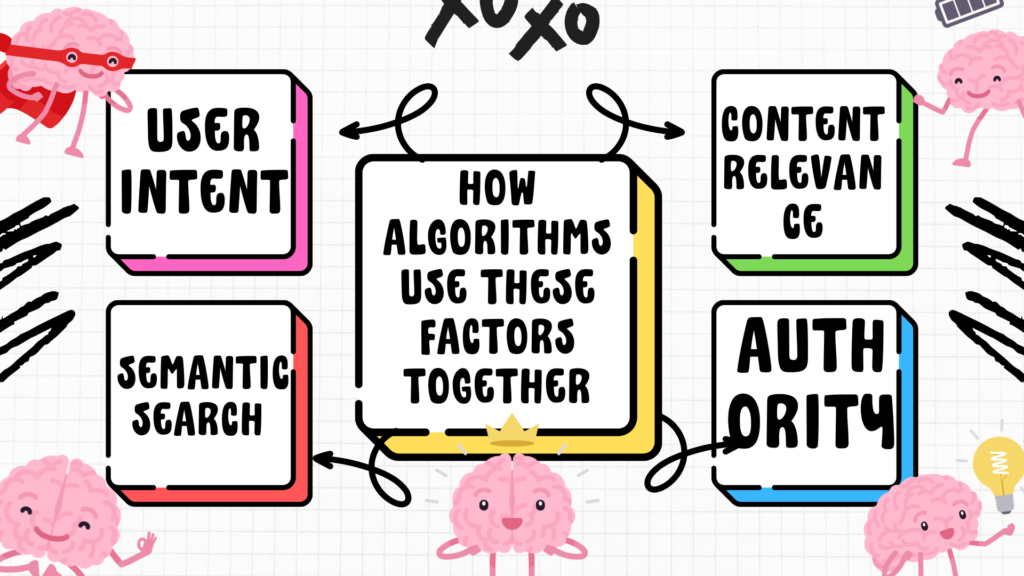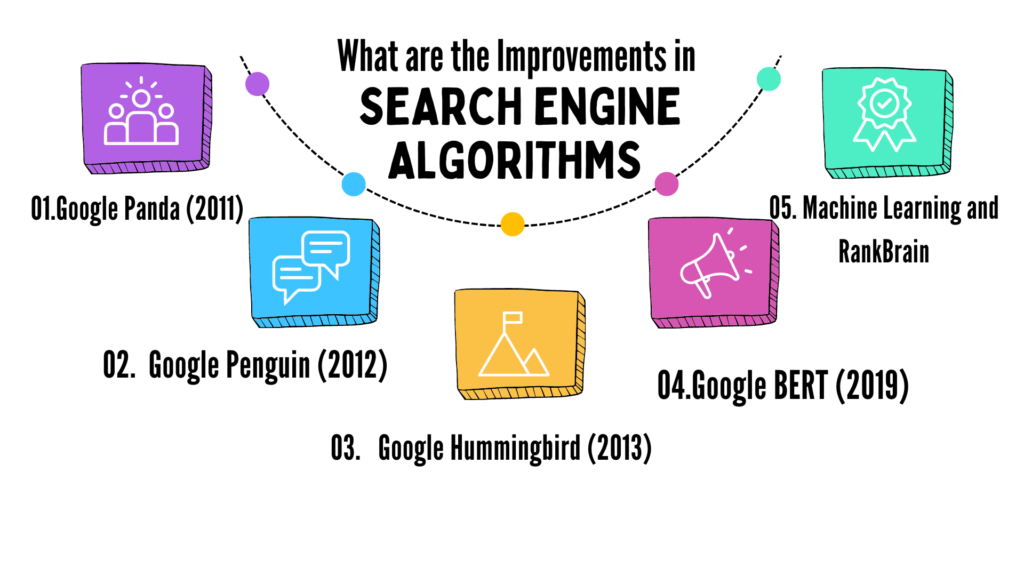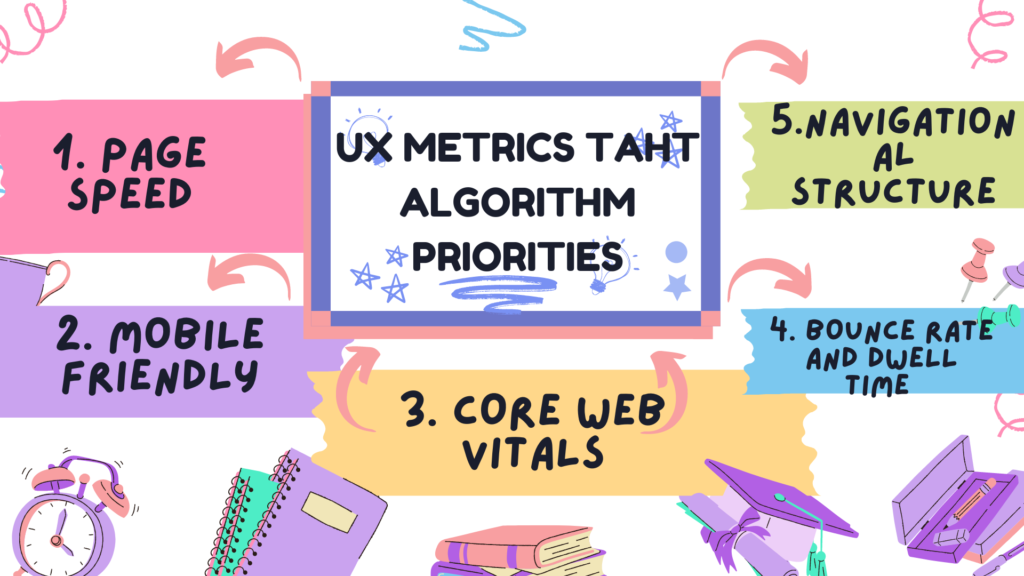
Ever wondered how search engines like Google decide which websites appear at the top of your search results? The answer lies in something called search engine algorithms. The search engine’s algorithms are its brains; they sort through billions of pages to get the most relevant results for your query.
For anyone involved in SEO, understanding these algorithms is important. Knowing how they work can largely impact your website’s visibility. You may improve your search engine ranks, bring in more customers, and expand your business by creating content that is optimized for these algorithms.
On the flip side, ignoring them could leave your site buried deep in search results, far from potential visitors.
In this blog, we’ll break down how search engine algorithms work, how they’ve evolved over time, and what all this means for your SEO strategy. Whether you’re new to SEO or looking to refine your approach, this guide will help you navigate the complex world of search engine algorithms.
What is Search Engine Algorithm?
Search engine algorithms are complex systems that search engines like Google, Bing, and others use to retrieve data from their index and deliver the best possible results for a query. These algorithms analyze various ranking factors, such as keywords, content quality, and backlinks, to determine the most relevant results for the user’s search intent.
Why It Matters to Businesses and SEO Professionals

Understanding search engine algorithms is crucial for businesses and SEO professionals because they directly influence a website’s visibility on search engine results pages (SERPs). By aligning your SEO strategies with the algorithms’ requirements, you can improve your chances of ranking higher, driving more organic traffic to your site. Failing to do so may result in lower rankings, reduced traffic, and ultimately, fewer conversions.
How Search Engine Algorithm Works
Search engine algorithms are the invisible forces that determine which websites appear at the top of search results and which are buried deep down. These algorithms are designed to analyze a vast number of factors to provide the most relevant and useful results for users. But how exactly do they work? Let’s break it down.
Understanding User Intent
One of the key elements of search engine algorithms is understanding user intent. When you type a query into a search engine, the algorithm doesn’t just look at the words you used—it tries to figure out what you really want to find.
For example, if you search for “best pizza near me,” the algorithm understands that you’re probably looking for a place to eat pizza nearby, not a recipe or the history of pizza. This understanding of user intent is crucial for delivering results that truly satisfy the searcher’s needs.
The Role of Semantic Search
Semantic search takes this a step further. It’s about understanding the meaning behind the words, not just matching keywords. With semantic search, algorithms can grasp the context of a query, even if it’s phrased differently than expected.
Example: If you search for “How to make a cake without eggs,” the algorithm understands that you want egg-free cake recipes. Even though you didn’t explicitly mention “recipes” or “egg substitutes,” the algorithm connects the dots to provide relevant results.
How Algorithms Use These Factors Together

Search engine algorithms combine user intent and semantic search with other factors like keyword relevance, content quality, and backlinks. They then rank the results based on how well they match the searcher’s query.
Content Relevance: Does the page provide information closely related to the search query?
Authority: Is the website a trusted source in its field?
User Experience: How easy is it to navigate the site? Does it load quickly? Is it mobile-friendly?
All these elements work together to determine which pages appear first. The goal is to present results that not only match the query but also provide the best possible user experience.
The Continuous Learning Process
Algorithms aren’t static—they’re constantly learning and evolving. Through machine learning, search engines analyze user behavior (like clicks, time spent on a page, and bounce rates) to refine how they rank pages. This ongoing learning helps search engines get better at predicting what users want.
Example: If users frequently click on a particular link after searching a specific query, the algorithm might rank that link higher in the future because it seems to satisfy user intent.
By understanding how search engine algorithms interpret user intent and use semantic search, you can tailor your content to meet these criteria, helping your website rank better and reach the right audience.
What are the Improvements in Search Engine Algorithms Until Now
Search engine algorithms have come a long way from their early days, constantly evolving to deliver more accurate and relevant search results. Each major update brought significant changes to how websites are ranked, forcing SEO professionals to adapt their strategies. Let’s explore some of the key algorithm updates that have shaped the landscape of SEO.

1. Google Panda (2011)
Google Panda was a game-changer in the world of SEO. Launched in 2011, this update aimed to crack down on low-quality content and thin sites that offered little value to users. Websites that relied on content farms, keyword stuffing, or duplicated content saw their rankings plummet. On the flip side, sites with high-quality, original content were rewarded with better visibility.
Impact on SEO: Panda shifted the focus of SEO from quantity to quality. It taught SEO professionals that content needed to be informative, well-researched, and user-focused to rank well. This update also emphasized the importance of on-page SEO, as factors like content relevance and user experience became crucial.
2. Google Penguin (2012)
Following closely on the heels of Panda, Google Penguin was introduced in 2012 to tackle another significant issue: spammy link practices. Penguin targeted websites that engaged in manipulative link-building strategies, such as buying links or participating in link schemes. Sites caught in these practices were severely penalized.
Impact on SEO: Penguin made it clear that the quality of backlinks matters more than quantity. SEO strategies had to evolve to prioritize earning natural, high-quality links rather than trying to game the system with shady tactics. This update underscored the importance of building a trustworthy online presence.
3. Google Hummingbird (2013)
In 2013, Google introduced Hummingbird, an algorithm update designed to improve the understanding of search queries, especially long-tail and conversational queries. Hummingbird placed greater emphasis on user intent and semantic search, meaning that Google started to understand the context and meaning behind the words, not just the keywords themselves.
Impact on SEO: With Hummingbird, SEO shifted from focusing solely on keywords to understanding the user’s intent. Content needed to be more comprehensive, addressing various aspects of a topic rather than just targeting specific keywords. This update also paved the way for the rise of voice search, as natural language processing became more important.
4. Google BERT (2019)
BERT, which stands for Bidirectional Encoder Representations from Transformers, was launched in 2019 and is one of the most significant advancements in search engine algorithms. BERT allows Google to better understand the nuances and context of words in search queries, making it especially powerful for understanding complex, conversational searches.
Impact on SEO: BERT highlighted the importance of creating content that answers specific user queries in a natural, conversational tone. It also reinforced the idea that keyword stuffing is outdated; instead, content should be written with the user’s intent in mind. This update further emphasized the role of semantic search in SEO.
5. Machine Learning and RankBrain
In addition to these updates, Google introduced RankBrain in 2015, a machine-learning-based component of the search algorithm. RankBrain helps Google process and understand search queries by learning from user interactions. It continuously refines how results are ranked based on what users find most helpful.
Impact on SEO: RankBrain marked the beginning of AI’s role in search engine algorithms. It’s not just about content and backlinks anymore—user experience and engagement metrics like click-through rates and time spent on a page have become critical ranking factors. As a result, SEO strategies now need to consider how users interact with content, not just how search engines crawl it.
These updates are a testament to how search engines are becoming more sophisticated in understanding and delivering what users want. For SEO professionals, staying ahead of these changes means continuously evolving strategies to meet the demands of these smarter algorithms.
We help your dental practice stand out online. Our on-page SEO makes sure local patients find you first.
Want more patients? Schedule a free call and see how we can help.
Contact US now!Impact of SEO on Search Ranking
Search engine algorithms are constantly evolving, and with each update, the impact of SEO on search rankings shifts. It’s no longer just about keywords or backlinks; search engines now prioritize a wide range of factors to determine where your site ranks. Let’s dive into how specific SEO tactics, like E-A-T and Core Web Vitals, play a crucial role in your website’s ranking.
E-A-T: Expertise, Authoritativeness, Trustworthiness
E-A-T, which stands for Expertise, Authoritativeness, and Trustworthiness, has become a cornerstone of SEO, especially for content related to health, finance, and other critical areas. Google introduced E-A-T as part of its broader effort to ensure that the content it ranks highly is reliable and produced by knowledgeable sources.
Impact of Algorithm Changes:
Expertise: Google’s algorithms now look for content created by experts or at least reviewed by them. For instance, health-related content written by a certified doctor is likely to rank higher than content written by someone without credentials.
Authoritativeness: This involves the credibility of the website as a whole. Sites with strong reputations, like established news outlets or academic institutions, are favored by algorithms.
Trustworthiness: Trust comes from transparency. Websites that provide clear information about who they are, where their data comes from, and how it’s used will generally rank better.
Example: If you run a health blog, it’s not enough to write informative articles. Ensuring your content is authored by medical professionals and your site includes clear author bios, references, and a privacy policy can significantly impact your rankings.
Core Web Vitals: The User Experience Factor
Core Web Vitals is another critical factor introduced by Google to measure user experience. These metrics focus on the speed, responsiveness, and visual stability of your website, directly affecting your ranking on search engine results pages (SERPs).
Impact of Algorithm Changes:
Loading (Largest Contentful Paint – LCP): LCP measures how quickly the main content of a page loads. A fast LCP is crucial for a good user experience and, consequently, better rankings.
Interactivity (First Input Delay – FID): FID gauges how quickly a page becomes interactive. If your site takes too long to respond to user inputs, it may rank lower.
Visual Stability (Cumulative Layout Shift – CLS): CLS assesses how much your content shifts while loading. A page with elements that jump around as it loads can frustrate users, negatively impacting your ranking.
Example: Consider an e-commerce website. If the site loads quickly, responds well to user interactions (like adding items to a cart), and doesn’t shift content around as images load, it will likely rank higher. Google’s algorithms reward these sites because they provide a smooth, user-friendly experience.
Adapting SEO Strategies to Algorithm Changes
As search engines place more emphasis on E-A-T and Core Web Vitals, SEO strategies must evolve. It’s not just about creating content anymore—it’s about ensuring that content is credible, authoritative, and hosted on a site that offers a great user experience.
Actionable Tips:
For E-A-T: Regularly update content to reflect the latest information, especially in fields like health or finance. Please include citations from reputable sources and make sure your site has a clear structure with author credentials displayed.
For Core Web Vitals: Optimize images, use efficient coding practices, and test your site’s performance on mobile devices to meet Core Web Vitals benchmarks.
These shifts in how algorithms assess SEO tactics like E-A-T and Core Web Vitals mean that websites must focus on more than just traditional SEO techniques to stay competitive. Emphasizing expertise, authority, and user experience will help ensure that your site not only ranks well but also earns the trust and engagement of your audience.
Search Engine Algorithms and User Experience (UX)
In the world of SEO, it’s easy to get caught up in the technical aspects—things like meta tags, backlinks, and keyword density. But today’s search engine algorithms are increasingly prioritizing something else: user experience (UX). This shift means that how users interact with your site can significantly impact your search rankings.

Why User Experience Matters to Algorithms
Search engines are designed to deliver the best possible results to users. But “best” doesn’t just mean the most relevant content; it also means the most user-friendly experience. If a website is difficult to navigate, slow to load, or not optimized for mobile devices, users are likely to leave quickly. Search engines notice this behavior and may lower the site’s ranking as a result.
Key UX Metrics That Algorithms Prioritize
Page Speed
Page speed is one of the most critical UX factors. Slow-loading pages can frustrate users, leading to higher bounce rates and lower engagement. Search engines like Google factor page speed into their algorithms because they know that faster sites provide a better user experience.
Example: If your website takes more than a few seconds to load, users may leave before even seeing your content. Tools like Google’s PageSpeed Insights can help you identify areas to improve.
Mobile-Friendliness
With more people accessing the web on mobile devices, mobile-friendliness is essential. Google’s Mobile-First Indexing means that the mobile version of your site is considered the primary version for ranking purposes.
Example: A site that’s easy to navigate on a smartphone—think responsive design, large buttons, and text that’s readable without zooming—will likely rank higher than a site that’s only optimized for desktop.
Core Web Vitals
Core Web Vitals are a set of specific factors that Google considers important in a page’s overall user experience. These include Largest Contentful Paint (LCP), First Input Delay (FID), and Cumulative Layout Shift (CLS), all of which are crucial for providing a smooth user experience.
Example: A site that loads its main content quickly (LCP), responds rapidly to user input (FID), and maintains a stable layout as it loads (CLS) will be favored in search rankings.
Bounce Rate and Dwell Time
Bounce rate refers to the percentage of visitors who leave a site after viewing only one page, while dwell time is how long a user stays on a page before returning to the search results. Both metrics indicate to search engines how engaging or useful a page is.
Example: A high bounce rate combined with a short dwell time might suggest that users aren’t finding what they’re looking for, which could negatively impact your ranking.
User Engagement
User engagement includes actions like scrolling, clicking on links, and interacting with multimedia elements. High engagement signals that users find the content valuable, which can positively influence search rankings.
Example: If users frequently share your content on social media, comment on posts, or engage with interactive elements like quizzes or videos, this can boost your site’s SEO performance.
Navigational Structure
A clear, intuitive navigational structure helps users find the information they need quickly. Search engines consider how easy it is for users to move around your site when determining rankings.
Example: Sites with logical menu structures, internal links, and breadcrumb navigation provide a better user experience and may rank higher.
The Intersection of UX and SEO
To stand out in today’s competitive search landscape, it’s not enough to optimize for traditional SEO factors alone. You also need to focus on delivering an excellent user experience. This means ensuring your site is fast, mobile-friendly, and engaging. By doing so, you’re not just making your users happy—you’re also giving search engines the signals they need to rank your site higher.
Focusing on UX is no longer optional if you want to succeed in SEO. By prioritizing these metrics, you’ll be well-positioned to improve both your user satisfaction and your search engine rankings.
Role of AI and Machine Learning in Search Engine Algorithms
As the internet continues to grow exponentially, search engines need to keep up with the vast amount of content being produced daily. This is where artificial intelligence (AI) and machine learning come into play, revolutionizing how search engines process and rank information. These technologies allow search engines to deliver more personalized and relevant results, adapting to user behavior in real-time.
Understanding AI-Driven Algorithms: The Case of RankBrain
Google’s RankBrain, introduced in 2015, is one of the most well-known AI-driven algorithms. RankBrain is part of Google’s overall search algorithm, and it uses machine learning to understand and process search queries more effectively.
How RankBrain Works:
Learning from User Behavior: RankBrain continuously learns from user interactions. For example, if users frequently click on a specific result for a certain query and spend time on that page, RankBrain will recognize this as a signal that the result is relevant. Over time, it will adjust rankings to reflect this, pushing more helpful results higher up in the search results.
Handling Complex Queries: RankBrain is particularly useful for understanding complex, ambiguous, or previously unseen search queries. It uses machine learning to make educated guesses about what users are searching for, even if the query is unique or unusual.
Example: If you search for “best laptop for graphic design under $1000,” RankBrain can interpret the intent behind your query and prioritize results that match these specific criteria, even if the exact phrase doesn’t appear on the page.
Personalization of Search Results
AI and machine learning enable search engines to personalize search results based on individual user behavior. This means that two people searching for the same term might see different results, depending on factors like their search history, location, and even the device they’re using.
Factors Influencing Personalization:
Search History: If you frequently search for tech-related content, the search engine might prioritize technology news or product reviews in your results.
Location: A search for “restaurants near me” will deliver different results depending on your geographic location, thanks to AI’s ability to factor in local context.
Device Used: If you’re searching on a mobile device, the search engine might prioritize mobile-friendly websites to ensure a better user experience.
Example: A frequent traveler might get search results that favor travel blogs, booking websites, and location-based services, while someone interested in cooking might see more recipes, cooking tips, and kitchen gadget reviews.
Continuous Improvement with Machine Learning
Machine learning allows search engines to improve continuously. Unlike traditional algorithms that need to be manually updated by engineers, AI-driven algorithms can adjust and refine themselves based on new data.
Dynamic Adjustments:
Adaptation to Trends: As new trends emerge, AI can quickly adapt. For instance, during a major event or holiday, search algorithms can shift to prioritize relevant content, like news updates or seasonal shopping deals.
Reducing Spam: AI is also instrumental in identifying and reducing spammy content. By learning from patterns associated with low-quality or deceptive content, machine learning algorithms can downgrade such pages in the rankings.
Example: During a global event like the Olympics, search engines might prioritize news, scores, and live updates related to the event, while downgrading unrelated or low-quality content that tries to capitalize on the trending keywords without providing real value.
AI and machine learning are not just buzzwords in the world of SEO; they are pivotal in making search engines smarter, more responsive, and better at delivering exactly what users are looking for. By continuously learning from user behavior, these technologies ensure that search results are not only relevant but also increasingly personalized to individual needs.
How to Prepare for Search Engine Algorithm Updates: Advanced Prevention Tips
1. Reviewing recently granted Google patents can give clues about upcoming ranking factors. For example, tracking patents around semantic search and natural language processing (NLP) helps prepare for updates focused on understanding user intent.
2. Analyzing server log files reveals how Google crawls your site and can highlight potential issues before an update. For instance, if certain pages are crawled less frequently, this could indicate an underlying problem with internal linking or site structure.
3. Relying solely on organic traffic is risky. Building up alternative traffic sources like email marketing, social media, and direct traffic can cushion the blow of an algorithm update that might negatively affect your rankings.
4. Google’s algorithms prioritize sites that show in-depth knowledge on a specific topic. Continuously creating and updating clusters of content around your key topics helps your site become an authority. This is especially useful in updates that favor E-A-T principles (Expertise, Authoritativeness, Trustworthiness).
5. After BERT and MUM updates, Google’s focus on understanding context and language became stronger. Optimizing content for NLP by including natural-sounding language and addressing user queries in a conversational tone will help your site stay compliant with these changes.
6. Google uses structured data to understand content better. Ensuring your schema markup is current, complete, and valid will enhance your chances of gaining rich snippets and being indexed correctly during an update.
7. Before making drastic SEO changes in response to an update, use A/B testing to assess the impact. For example, test different internal linking structures or on-page optimizations to see how Google responds before rolling out site-wide changes.
8. Watching how competitors are affected by the update can give insights into changes you need to make. If their rankings drop or rise significantly, analyze their backlink profiles, content strategies, and technical SEO adjustments to spot trends.
9. Metrics like time on site, bounce rate, and click-through rates are likely signals that Google uses in ranking. Improving engagement through better content, multimedia elements, and interactive features can provide a buffer against fluctuations during updates.
10. Regularly updating and expanding old content ensures its relevance. Adding new data, updating statistics, and optimizing for new keyword opportunities keeps content fresh and aligned with algorithm preferences. This also shows Google that your content is actively maintained, which is beneficial during updates.
Conclusion
In today’s SEO landscape, creating a webpage that performs well in search rankings involves more than just traditional keyword optimization. It requires a deep understanding of how search engine algorithm function, particularly in their increasing reliance on AI, machine learning, and user experience. By focusing on these aspects—UX, content quality, and adaptability—you can ensure that your webpage is well-positioned to succeed in an ever-evolving digital environment.
Remember, the future of search is all about personalization and relevance, so keeping these factors in mind will not only improve your rankings but also increase the overall experience for your users.
FAQ About Search Engine Algorithm.
Google updates its search engine algorithm frequently, with hundreds of small changes each year. However, major core updates occur a few times annually, typically announced by Google.
Some major updates include Panda (content quality), Penguin (link quality), Hummingbird (semantic search), RankBrain (machine learning), BERT (natural language processing), and the Core Web Vitals update (user experience metrics).
Focus on high-quality content, good user experience, clean technical SEO, and earning authoritative backlinks. Regularly update content and ensure your site meets the latest best practices, especially with mobile-friendliness and speed.
Identify the cause (e.g., thin content, bad backlinks), fix the issues, and request reconsideration through Google Search Console if penalized manually. Regularly audit your site to ensure compliance with Google’s guidelines.
